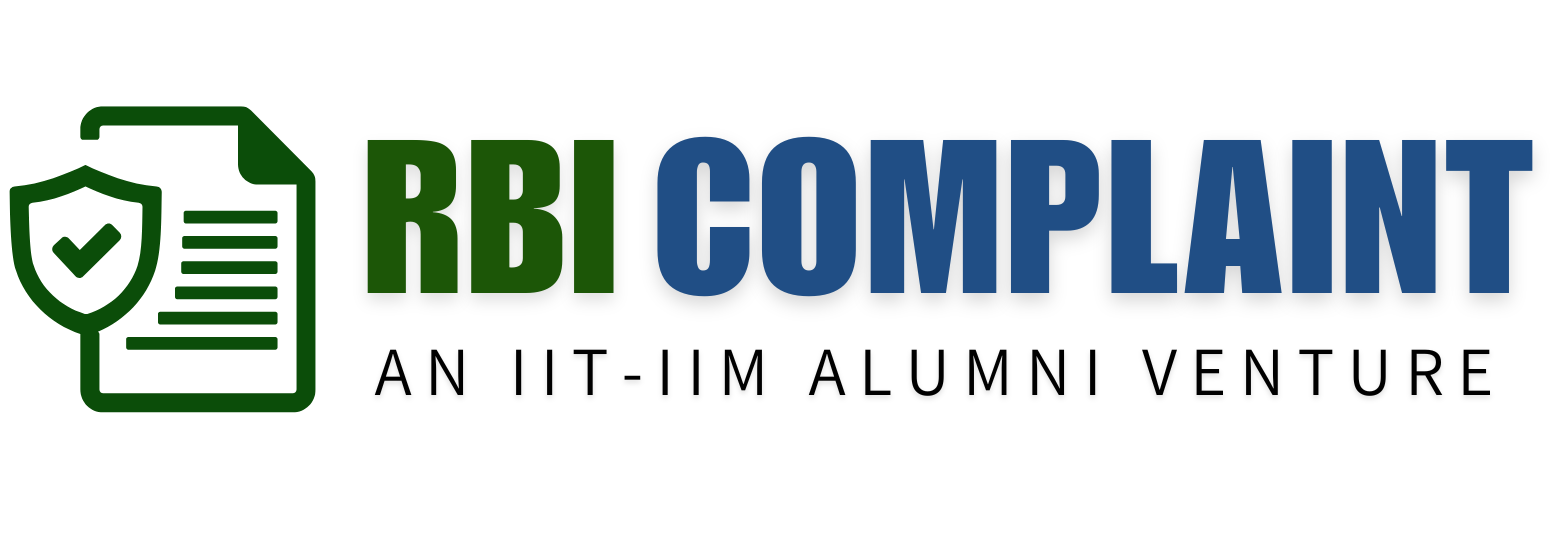· Tips For Writing Effective Rbi Complaint · 5 min read
How to Write an Effective RBI Complaint | Complete Guide
Learn step-by-step how to draft a strong RBI complaint that gets results. Follow our expert tips and avoid common mistakes.

Let’s face it dealing with banking issues is frustrating. You expect smooth service, but when things go wrong, and your bank doesn’t respond, the next best thing is to approach the Reserve Bank of India (RBI). But here’s the catch: if your complaint isn’t written effectively, you could get lost in red tape.
This guide will walk you through everything you need to know about writing a complaint that actually gets results. Whether it’s a fraud issue, delayed transaction, or poor service, we’ve got you covered.
Understanding the RBI Grievance Redressal System
Role of RBI in Consumer Protection
The RBI doesn’t directly manage your bank account, but it plays watchdog. It ensures banks follow the rules and treat customers fairly. Through its redressal systems, RBI ensures consumer complaints are addressed and resolved.
What Types of Complaints Can Be Filed?
Unauthorized transactions
ATM withdrawal issues
Unresponsive bank branches
Loan processing delays
Incorrect charges or deductions
Mis-selling of products
Poor customer service
In short, if the bank messed up and ignored your complaint—RBI is your next step.
Before You File a Complaint
Try Resolving the Issue with the Bank First
RBI won’t entertain your complaint unless you’ve first tried to solve the issue with your bank. Lodge a formal complaint through your branch, email, or customer care, and wait for 30 days.
Keep All Documentation Ready
Save:
Complaint reference numbers
Email exchanges
Screenshots
Account statements
Letters or receipts
This will be gold when you file your complaint with RBI.
When and Where to File Your RBI Complaint
Timeline for Filing
Once 30 days pass without a proper response, or you’re not satisfied, go ahead and approach RBI—but not later than one year from the bank’s final reply.
RBI’s Complaint Portal: CMS (Customer Management System)
Head over to: https://cms.rbi.org.in
This is your official channel. It’s online, easy, and fast.
Step-by-Step Guide to Filing an RBI Complaint
Step 1: Visit the Official CMS Portal
Open https://cms.rbi.org.in on your browser. You’ll land on a neat interface asking you what kind of grievance you have.
Step 2: Register/Login
First-time user? Register. Already filed a complaint before? Just log in.
Step 3: Fill in Personal and Banking Details
You’ll be asked to fill:
Your name
Address
Mobile/email
Bank’s name and branch
Account details
Step 4: Clearly Explain Your Grievance
This is where it counts. Write clearly:
What happened
When it happened
Who you contacted
What was the response
What you want as resolution
Step 5: Upload Supporting Documents
Don’t skip this. Add your complaint letter to the bank, screenshots, emails—anything that proves your case.
Step 6: Review and Submit
Double-check everything. Typos and missing info could delay the process.
Tips for Writing a Clear and Effective Complaint
Use Simple, Direct Language
Avoid legal jargon or overly complex language. Be human.
Bad Example:
The aforementioned account was subjected to fraudulent access due to systemic loopholes.
Better:
Money was withdrawn without my permission. I didn’t share my OTP or card details.
Stick to Facts, Not Emotions
Keep it professional. No need to call your bank “useless” or “corrupt.” It doesn’t help.
Be Chronological and Precise
List events in the order they happened. Use dates and times.
Highlight What You Want as Resolution
State clearly:
Refund request
Compensation
Apology
Clarification
Sample RBI Complaint Template
What to Include
Your name, contact details
Bank’s name and branch
Account number
Summary of the issue
Steps you’ve already taken
Desired outcome
Ready-to-Use Format
Subject: Complaint against [Bank Name] – [Issue]
Dear RBI Grievance Officer,
I am writing to file a complaint against [Bank Name, Branch] regarding [brief issue, e.g., unauthorized debit].
Despite raising a complaint (Ref No: XYZ123) on [date], I’ve received no satisfactory resolution.
Please find all supporting documents attached. I request your urgent intervention.
Regards,
[Your Full Name]
[Mobile Number]
[Email Address]
Common Mistakes to Avoid
Writing long emotional rants
Skipping essential documents
Using incorrect bank details
Missing the 30-day wait period
Not stating a clear resolution request
What Happens After You File a Complaint
You’ll get:
A complaint ID
Status updates on email/SMS
Usually resolved within 30-60 days
Banks are required to respond through RBI’s CMS platform, and RBI monitors the exchange.
What If You’re Not Satisfied with the Outcome?
Appealing to the RBI Ombudsman
If you’re not happy with the bank’s reply through CMS, you can appeal to the RBI Ombudsman via the same portal.
Escalation Procedure
If needed, you can escalate to:
Principal Nodal Officer of the bank
Consumer Court (as a last resort)
RBI Ombudsman vs. CMS Portal
Differences in Process
CMS: First step. Handles most complaints.
Ombudsman: Next step if CMS doesn’t resolve it.
Which One Should You Use?
Start with CMS. The Ombudsman only steps in after CMS fails.
How Long Does It Take for RBI to Resolve Complaints?
On average:
CMS: 30–60 days
Ombudsman: 45–90 days
Complicated cases may take longer.
Legal Alternatives if RBI Process Fails
Consumer Forums: For compensation and service issues
Banking Lokpal: For high-value disputes
Civil Courts: As a last resort
Real-Life Examples and Case Studies
Example 1:
A customer lost ₹50,000 in a UPI fraud. The bank refused a refund. RBI intervened, and within 45 days, the money was refunded.
Example 2:
Loan closure was delayed due to a system error. After complaining via CMS, the bank cleared the dues and issued an apology.
Conclusion
Writing an effective RBI complaint isn’t rocket science—but it does require clarity, proof, and patience. Think of it as presenting your case in court: the better your case, the faster your justice. Don’t let bank negligence go unchecked—take charge, and use your voice.
FAQs
1. Can I file a complaint without visiting the bank first?
No. You must allow the bank 30 days to resolve your issue before contacting RBI.
2. Is there a fee to file a complaint with RBI?
No, the complaint process is completely free.
3. How do I check the status of my complaint?
Log in to the CMS portal and use your complaint ID to track progress.
4. Can I withdraw my complaint?
Yes, through the CMS dashboard, you can withdraw it if needed.
5. What documents should I definitely include?
Always attach complaint reference numbers, emails, account statements, and any proof of the issue.



